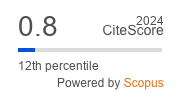Issues of implementing neural network algorithms on memristor crossbars
https://doi.org/10.17073/1609-3577-2019-4-272-278
Abstract
About the Authors
A. Yu. MorozovRussian Federation
Alexander Yu. Morozov: Cand. Sci. (Phys.-Math.), Researcher
D. L. Reviznikov
Russian Federation
Dmitry L. Reviznikov: Dr. Sci. (Phys.-Math.), Professor
K. K. Abgaryan
Russian Federation
Karine K. Abgaryan: Dr. Sci. (Phys.-Math.), Head of the Department
References
1. Wong H.-S. P., Lee H.-Y., Yu S., Chen Y.-S., Wu Y., Chen P.-S., Lee B., Chen F. T., Tsai M.-J. Metal-oxide RRAM. Proceedings of the IEEE, 2012, vol. 100, no. 6, pp. 1951—1970. DOI: 10.1109/JPROC.2012.2190369
2. Yang J. J., Strukov D. B., Stewart D. R., Memristive devices for computing. Nature Nanotechnology, 2013, vol. 8, no. 1, pp. 13—24. DOI: 10.1038/nnano.2012.240
3. Li C., Hu M., Li Y., Jiang H., Ge N., Montgomery E., Zhang J., Song W., Dávila N., Graves C. E., Li Z., Strachan J. P., Lin P., Wang Z., Barnell M., Wu Q., Williams R. S., Yang J. J., Xia Q. Analogue signal and image processing with large memristor crossbars. Nature Electronics, 2018, vol. 1, no. 1, pp. 52—59. DOI: 10.1038/s41928-017-0002-z
4. Hu M, Graves C. E., Li C., Li Y., Ge N., Montgomery E., Dávila N., Jiang H., Williams R. S., Yang J. J., Xia O., Strachan J. P. Memristor-based analog computation and neural network classification with a dot product engine. Advanced Materials, 2018, vol. 30, no. 9, p. 1705914. DOI: 10.1002/adma.201705914
5. Tarkov M. S. Implementation of a neural WTA-network on the memristor crossbar. Prikl. Diskr. Mat. Suppl., 2015, no. 8, pp. 151—154. (In. Russ.). DOI: 10.17223/2226308X/8/59
6. Diehl P. U., Cook M. Unsupervised learning of digit recognition using spike-timing-dependent plasticity. Front. Comput. Neurosci., 2015, vol. 9, art. 99, p. 9. DOI: 10.3389/fncom.2015.00099
7. Ambrogio S., Balatti S., Milo V., Carboni R., Wang Z.-Q., Calderoni A., Ramaswamy N., Ielmini D. Neuromorphic learning and recognition with one-transistor-one-resistor synapses and bistable metal oxide RRAM. IEEE Transactions on Electron Devices, 2016, vol. 63, no. 4, pp. 1508—1515. DOI: 10.1109/TED.2016.2526647
8. Guo Y., Wu H., Gao B., Qian H. Unsupervised learning on resistive memory array based spiking neural networks. Front. Neurosci., 2019, vol. 13, art. 812. DOI: 10.3389/fnins.2019.00812
9. Milo V., Pedretti G., Laudato M., Bricalli A., Ambrosi E., Bianchi S., Chicca E., Ielmini D. Resistive switching synapses for unsupervised learning in feed-forward and recurrent neural networks. In: IEEE International Symposium on Circuits and Systems (ISCAS). Florence (Italy): IEEE, 2018, pp. 1—5. DOI: 10.1109/ISCAS.2018.8351824
10. Pedretti G., Bianchi S., Milo V., Calderoni A., Ramaswamy N., Ielmini D. Modeling-based design of brain-inspired spiking neural networks with RRAM learning synapses. In: IEEE International Electron Devices Meeting (IEDM). San Francisco (CA, USA): IEEE, 2017, pp. 28.1.1—28.1.4. DOI: 10.1109/IEDM.2017.8268467
11. Milo V., Ielmini D., Chicca E. Attractor networks and associative memories with STDP learning in RRAM synapses. In: IEEE International Electron Devices Meeting (IEDM). San Francisco (CA, USA): IEEE, 2017, pp. 11.2.1—11.2.4. DOI: 10.1109/IEDM.2017.8268369
12. Li B., Shan Y., Hu M., Wang Y., Chen Y., Yang H., Memristor-based approximated computation. In: International Symposium on Low Power Electronics and Design (ISLPED). Beijing (China): IEEE, 2013, pp. 242—247. DOI: 10.1109/ISLPED.2013.6629302
13. Teplov G. S., Gornev E. S. Multilevel bipolar memristor model considering deviations of switching parameters in the Verilog-A language. Russ. Microelectron., 2019, vol. 48, no. 3, pp. 131—142. DOI: 10.1134/S1063739719030107
14. Morozov A. Yu., Reviznikov D. L. Adaptive interpolation algorithm based on a kd-tree for numerical integration of systems of ordinary differential equations with interval initial conditions. Differential Equations., 2018, vol. 54, no. 7, pp. 945—956. DOI: 10.1134/S0012266118070121
15. Morozov A. Yu., Reviznikov D. L., Gidaspov V. Yu. Adaptive interpolation algorithm based on a kd-tree for the problems of chemical kinetics with interval parameters. Mathematical Models and Computer Simulations, 2019, vol. 11, no. 4, pp. 622—633. DOI: 10.1134/S2070048219040100
16. Morozov A. Yu., Reviznikov D. L. Modelling of dynamic systems with interval parameters on graphic processors. Programmnaya Ingeneria = Software Engineering, 2019, vol. 10, no. 2, pp. 69—76. DOI: 10.17587/prin.10.69-76
17. Morozov A. Yu., Reviznikov D. L. Metody komp’yuternogo modelirovaniya dinamicheskikh sistem s interval’nymi parametrami [Methods for computer modeling of dynamic systems with interval parameters ]. Moscow: Izd-vo Moskovskogo aviatsionnogo instituta, 2019, 160 p. (In Russ.)
18. Gulli A., Pal S. Deep learning with Keras: implement neural networks with Keras on Theano and TensorFlow. Birmingham; Mumbai: Packt Publishing Ltd., 2017, 490 p.
19. MNIST CNN. URL: https://keras.io/examples/mnist_cnn/ (accessed: 01.10.2019).
20. Train a simple deep CNN on the CIFAR10 small images dataset. URL: https://keras.io/examples/cifar10_cnn/ (accessed: 01.10.2019).
Review
For citations:
Morozov A.Yu., Reviznikov D.L., Abgaryan K.K. Issues of implementing neural network algorithms on memristor crossbars. Izvestiya Vysshikh Uchebnykh Zavedenii. Materialy Elektronnoi Tekhniki = Materials of Electronics Engineering. 2019;22(4):272-278. (In Russ.) https://doi.org/10.17073/1609-3577-2019-4-272-278






































